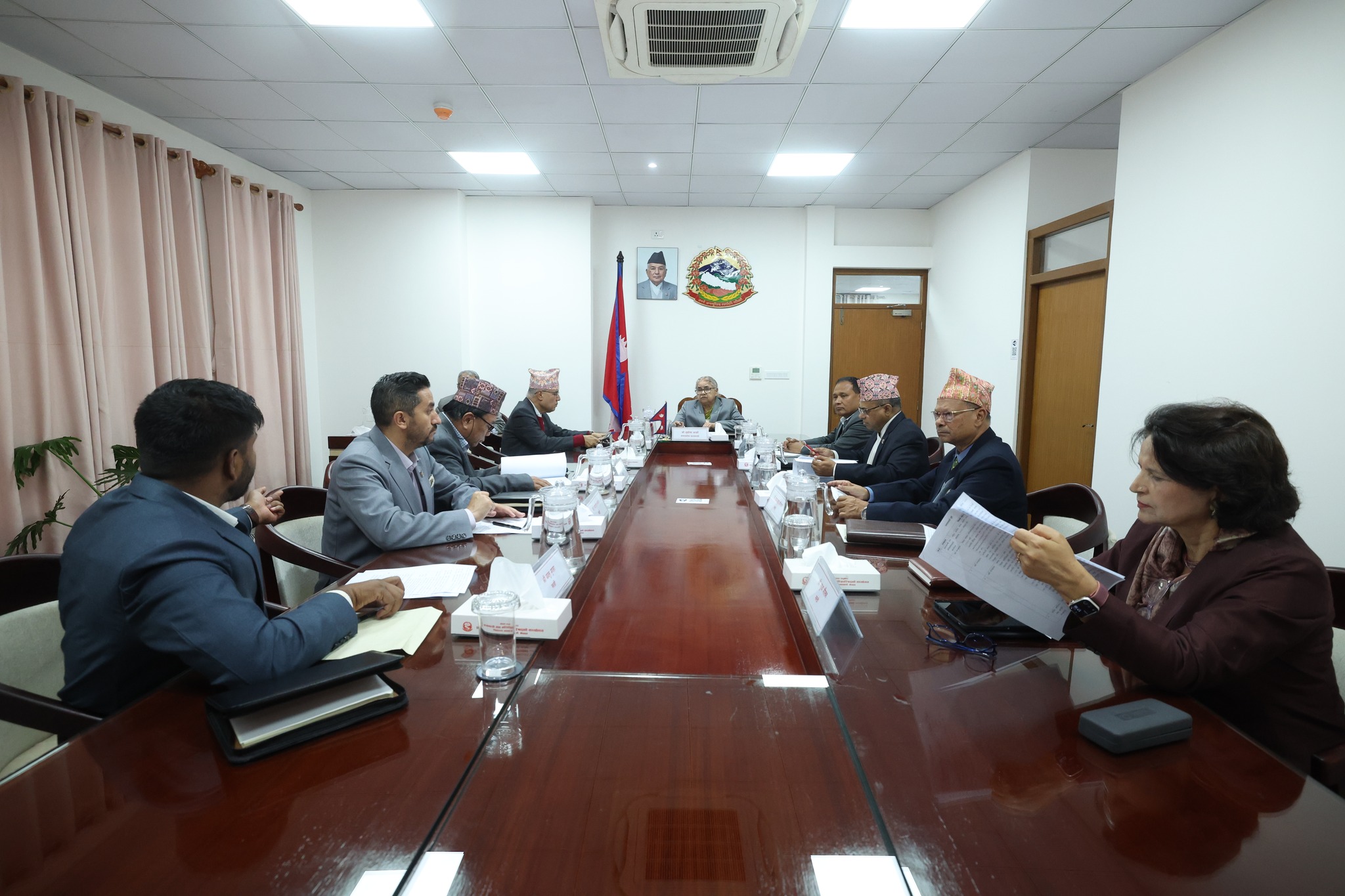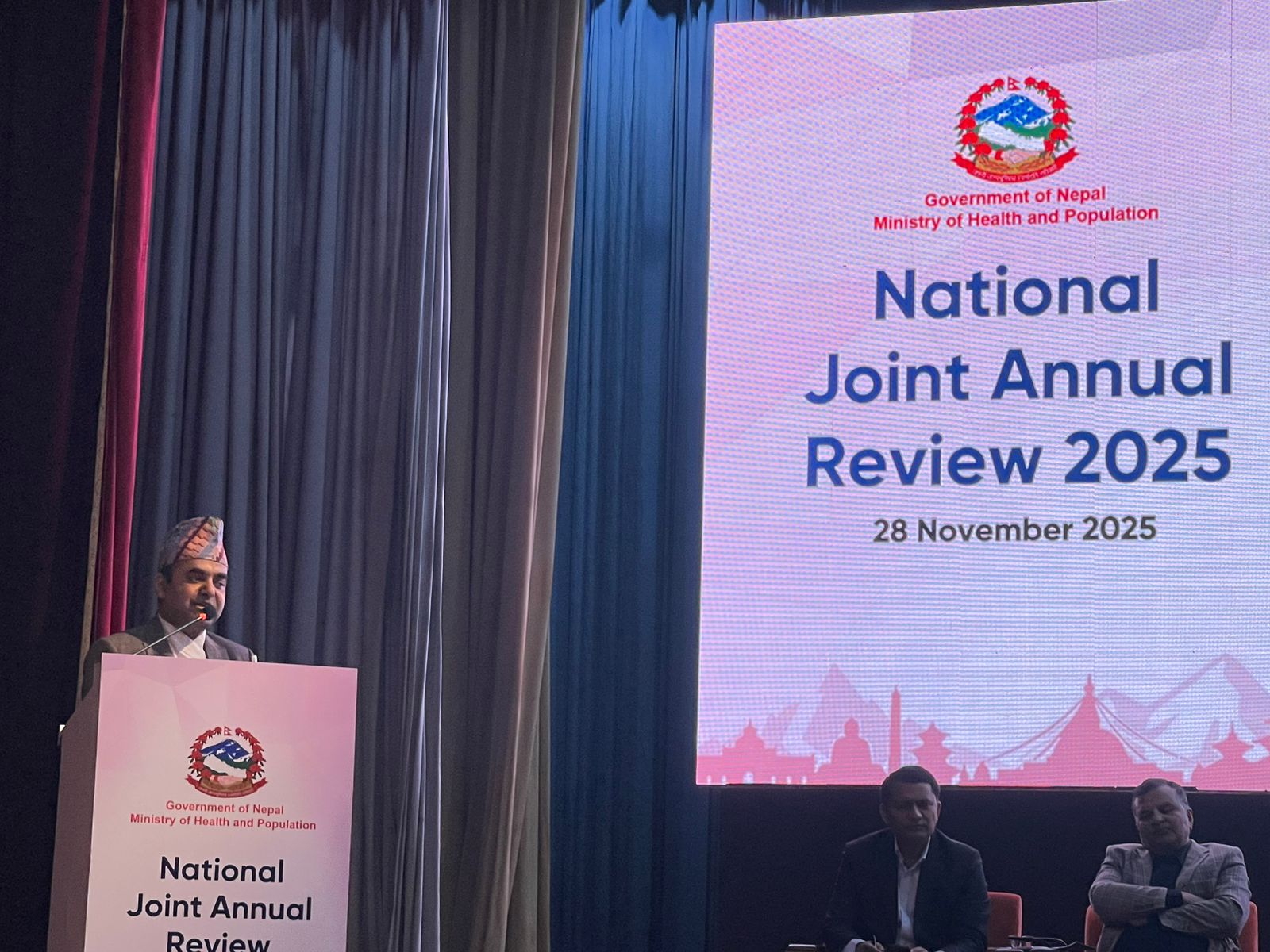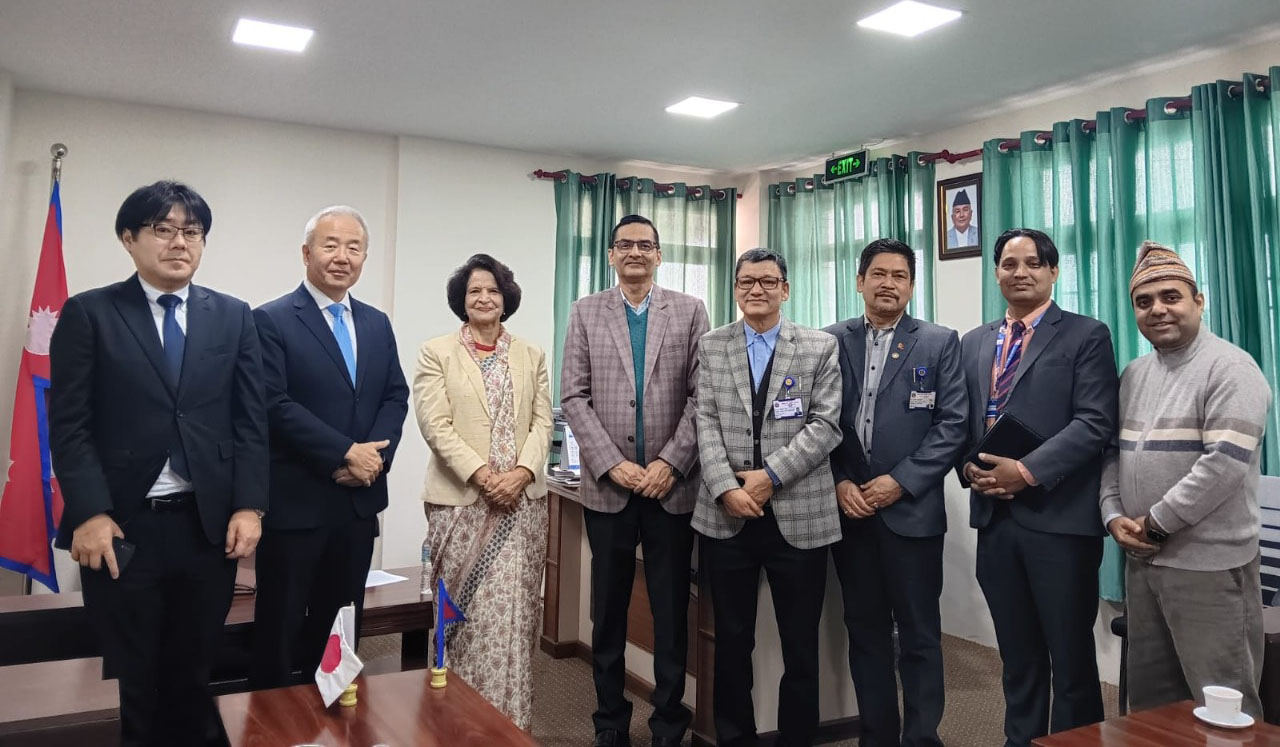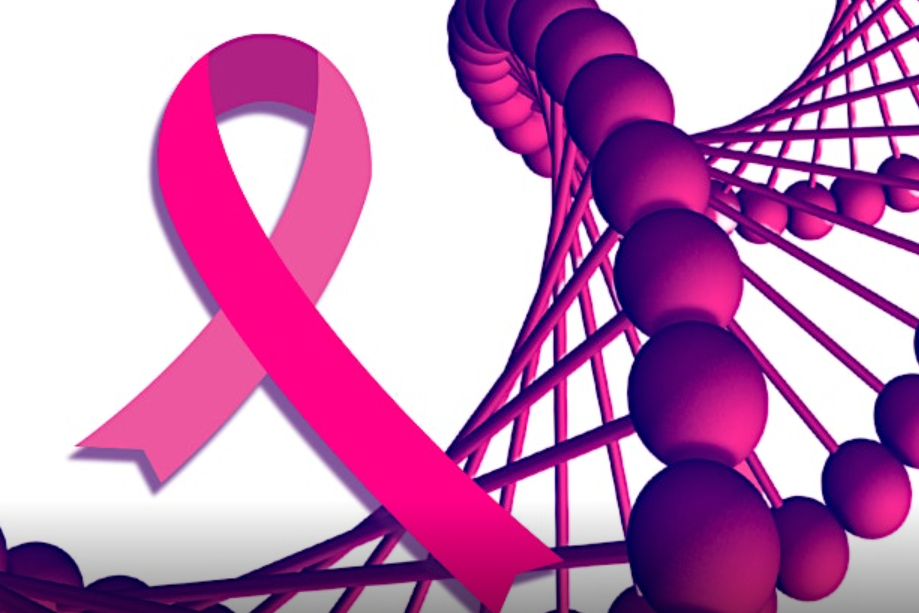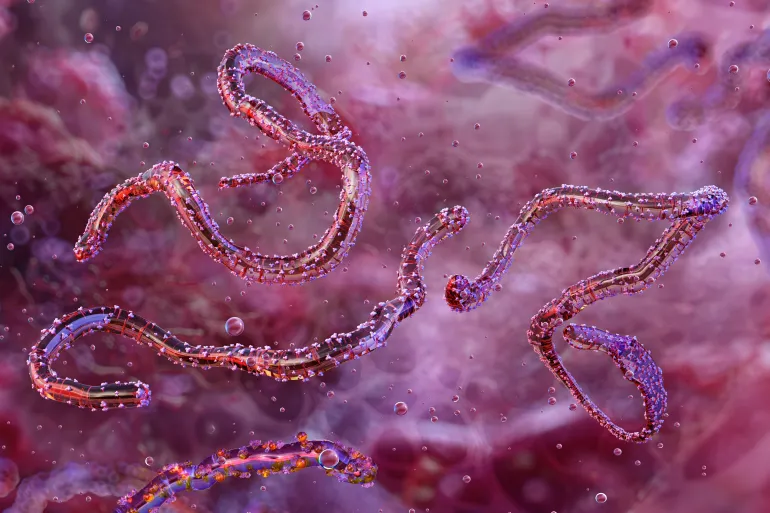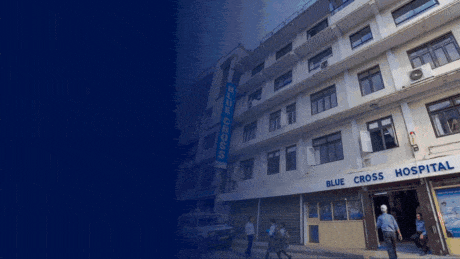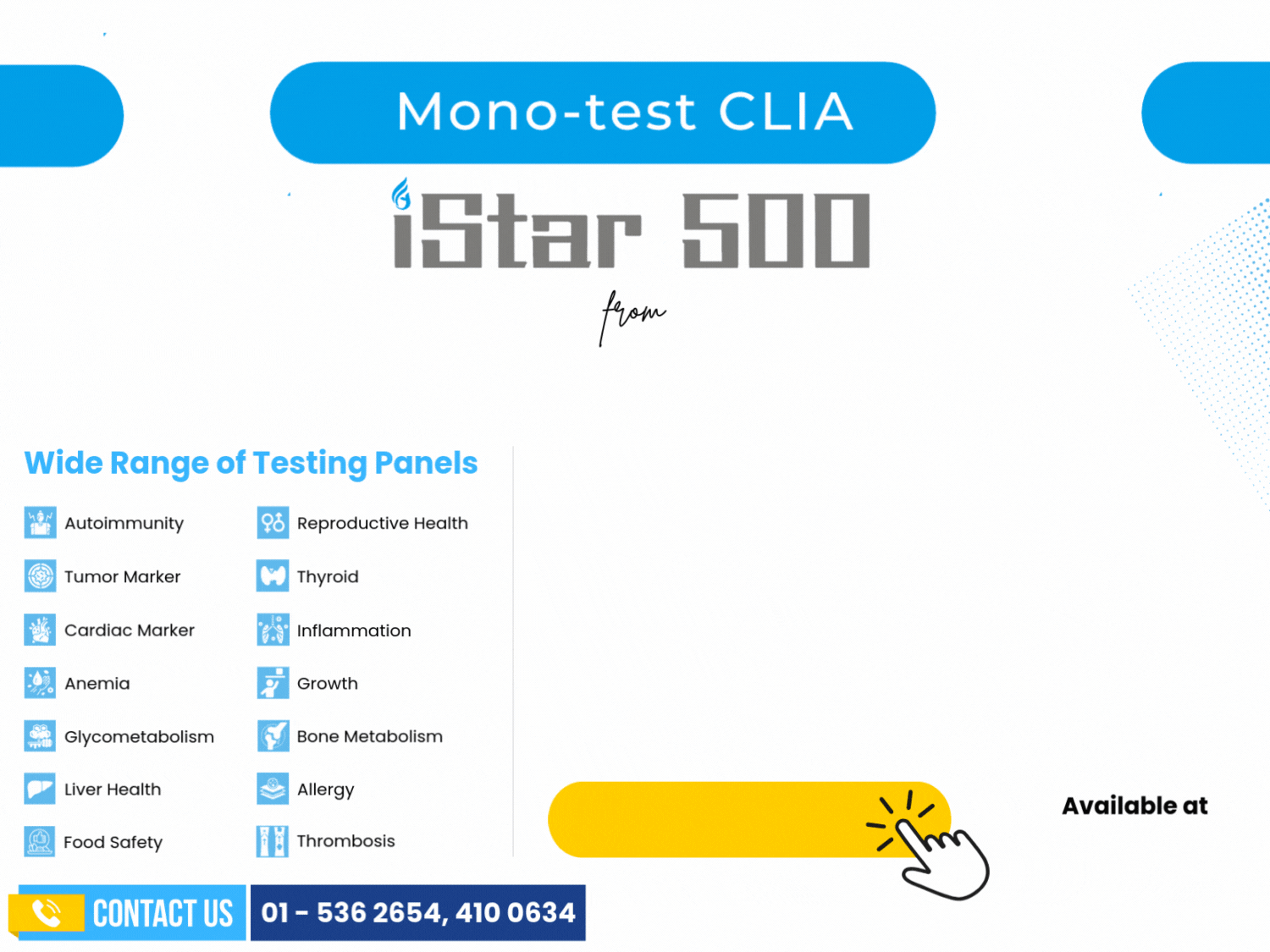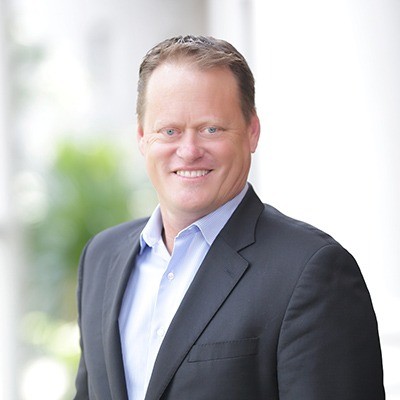
The Binaytara Foundation was established by Dr. Binay Shah and his wife, Tara Shah, with a mission to improve healthcare in resource-poor communities and enhance cancer care worldwide. The foundation works through educating healthcare providers and community members, advocating for better access to care, and conducting research to develop innovative program models and services that promote equitable access to healthcare. Today, the Binaytara Foundation is one of the largest providers of continuing medical education for oncologists and hematologists in the United States, conducting around 60 conferences annually. Among these, they organize an annual conference in Janakpur, Nepal.
During this event, Romika Neupane interviewed Justin Marquart, Chief Development Officer of the Binaytara Foundation, to learn more about his journey and the foundation’s future goals:
1. Could you please tell us about your professional background and career journey?
I’m Justin Marquart, and I currently serve as the Chief Development Officer at the Binaytara Foundation. My career actually began in the tech industry—I spent over a decade at Intel Corporation in leadership and marketing roles.
During that time, my wife and I had our first child, Ella, who was born with a congenital heart defect. Sadly, she passed away, and it was an incredibly difficult period for both of us. While we were at the hospital—living there during her ICU stay—I expected a massive bill. But they told us, “Don’t worry, it’s taken care of.” When I asked how, they said, “Philanthropy. Generous donors support this.”
That moment truly changed the trajectory of my life. Until then, I was busy climbing the corporate ladder. But after Ella’s passing, I started a foundation in her honor. Over time, it grew and ended up donating millions of dollars to children’s hospitals.
Though I continued working at Intel, the foundation work became a side project I deeply loved. Eventually, I was offered the role of Chief Development Officer at my alma mater, which led me into full-time philanthropy. I left Intel and, over the years, worked at Fred Hutchinson Cancer Center—the largest cancer center in the world—and SightLife, a global health organization working in India and Nepal.
Now, I’ve joined hands with Dr. Shah and Tara to help raise funds and build the Binaytara Foundation and our cancer center in Nepal into something transformative.
2. How did you meet Dr. Shah and learn about the Binaytara Foundation?
It’s kind of a funny story. Binaytara was well-known for its continuing medical education programs in the U.S., but they hadn’t yet focused on philanthropy. A recruiter reached out and asked me to help Dr. Binay Shah and Tara raise funds, offering me the position of Chief Development Officer.
Initially, I didn’t know much about the foundation. I thought, “Okay, sounds like someone doing great work.” I agreed to meet Dr. Shah for a 30-minute meeting—except we ended up talking for three hours! We shared ideas, experiences, and connected deeply. By the end of that conversation, I knew this was where I was meant to be. I remember my wife calling around 5 PM asking, “Are you coming home for dinner?” (laughs).
3. You came from a tech background. How hard was the transition into development and philanthropy?
It’s not easy, but it’s incredibly rewarding. At the end of the day, you can sell bicycles—or you can sell the idea of changing the world. My heart leans toward the latter: building hospitals, improving access to care, and making a difference. That’s where I feel I’m truly meant to be.
4. What happened to the foundation you started in Ella’s honor?
My friend Ryan and I ran it for about 10 years. His wife was also battling a serious illness at the time, so we together created the foundation in honor of both of them.
Life moved on—I now have four wonderful children, including my son Jonathan, who accompanied us on this trip. However, the spirit of Ella and her impact have never left me. That foundation shaped who I am today, even though it eventually concluded its formal work.
5. How is the Binaytara Foundation funded and sustained? What does the fundraising process look like?
Great question! We’re the largest provider of medical education for oncologists and hematologists in the U.S., organizing over 60 conferences a year. Pharmaceutical companies and other partners interested in research and collaboration with physicians fund these events.
This model allows us to be financially self-sustained. Then, when I meet potential donors, I can confidently say that 100% of their donation goes toward our mission—building hospitals, providing care, and so on. Unlike many organizations where only a fraction of donations reach the cause, we direct every dollar where it matters most.
6. Binaytara is not only prominent in the U.S. but also building Nepal’s largest cancer hospital in Madhesh. What are your thoughts on this?
That’s one of the things I’m most excited about. We currently operate a 25-bed hospital, but we’re working toward building a 200-bed comprehensive cancer center. It will be life-changing—not just for Nepal, but also for neighboring regions like Northern India and Bhutan.
Many people in the region are being diagnosed with breast and cervical cancers, but they don’t have access to radiation therapy or specialized care. We’ll be the first to offer these services locally, and it’s going to be transformational.
7. Are there similar nonprofit models in the U.S. like the Binaytara Foundation?
There are a few, like AMPATH, which built a cancer center in Nairobi. Fred Hutchinson also partnered on a cancer hospital in Uganda. But those are smaller (around 50–70 beds) and often part of public-private partnerships.
What makes Binaytara unique is that our hospital will be fully nonprofit and independently run—not a government-run facility. We’re building and operating it ourselves, which is rare.
8. What are the future plans for the Binaytara Foundation?
The hospital will be our cornerstone, but we’re also focused on expanding training and education. Currently, there are no oncologists in Province 2. Once the hospital is built, we’ll train doctors, nurses, and radiologists and bring in specialists.
We’re also building a radiation oncology center, expanding the current site to 50 beds within a year, and then constructing the 200-bed facility. Beyond Nepal, we’re exploring opportunities in Nigeria, Guatemala, Bhutan, and more. Our mission is to close cancer care gaps globally.
9. It’s not just about infrastructure—how will you ensure skilled human resources and systems?
We follow the CARE model:
C for Cancer Center—our hospital.
A for Advocacy—working with governments to ensure care access for all.
R for Research—we’re already conducting implementation science studies and plan to host clinical trials.
E for Education—we organize conferences, support training programs, and bring in young doctors and fellows to inspire future oncologists.
We host conferences in Janakpur and plan to expand to Kathmandu and other regions soon.
10. How supportive are the people and local government in Janakpur?
Very supportive. Advocacy is a key part of our model, and we’ve had excellent cooperation from both the local community and the government. Allocations have already been made for infrastructure support, and we’re working closely with authorities to ensure affordable and compassionate care—especially for those who can’t afford it.
11. Is everything moving smoothly, or have there been challenges?
It’s going great! Bureaucracy exists everywhere, whether in the U.S. or Nepal. But our team in Nepal works closely with local partners, resolving questions and concerns as they arise. We’re very optimistic and grateful for the collaborative spirit here.
12. Any final thoughts?
Being part of this initiative has been life-changing. I’ve seen far too many people suffer from preventable cancers. That should not be the case. Through this hospital, we can provide early diagnosis, treatment, and even prevention—and in doing so, save thousands of lives.
This work honors the memory of my daughter and helps me ensure that her legacy lives on through the lives we touch every day.
Romika Neupane
Published: April 8, 2025


